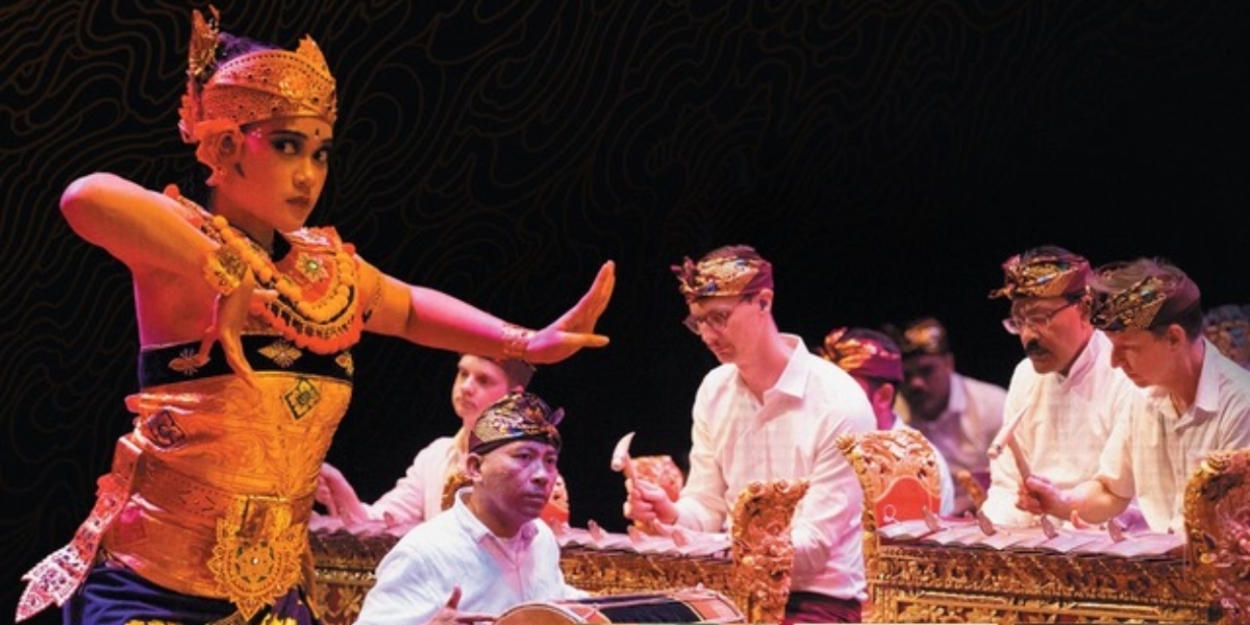Review: SAUDARA SOUND SYSTEM - OZASIA FESTIVAL 2023 at Space Theatre, Adelaide Festival Centre
A fusion of traditional and modern music, from Bali.

Reviewed by Ray Smith, Saturday 4th October 2023.
As I entered the intimacy of the Space Theatre to attend the sold-out performance of Saudara Sound System, I was struck by the extraordinary array of instruments that filled the performance space. Ten highly decorated Gamelan glittered under the house lights as I took my front-row seat for this general admission performance, cushions littered the stage, each with a piece of hand percussion carefully placed upon them, while at the back of the stage stood heavy carved wooden frames carrying the largest cymbals that I have ever seen.
A gentleman sitting to my left observed that it was like sitting in a temple, and he was absolutely correct for there was an air of ritual and spirituality about the scene before us, amplified by our proximity to the performance space.
There was an intriguing soundscape quietly drifting over the audience as they filed in, a creaking sound mixed with the sound of water, only just audible as the performers slowly and silently took to the stage.
A gentle song began, accompanied by the soulful sound of the Suling, a Balinese bamboo flute, expertly played, the continuous sound achieved by circular breathing, breath stored in the cheeks sounding the instrument as the player takes air in through the nose. Three more voices joined the song but, rather than lifting the overall volume, they added depth and subtlety, rising and falling with the notes of the Suling in soft waves, occasionally echoing back as if sampled. At the conclusion of the song, the musicians rose from their front of stage mats and moved to take their places behind the ornate Gamelan, and it was then that I realised that the largest of the ornate platforms, which looked like two Gamelan pushed together, actually held a huge array of electronic equipment. There was a small keyboard driving a bank of signal processors, drum pads of every description and even a Kaoss Pad, a sampling and multi-effects processor made famous by Brian Eno in the early 90s. The echoing of the voices was explained.
A Gamelan orchestra in full swing is a mind-boggling polyrhythmic avalanche of shifting pulses, bronze plates hit with a hammer resonating into the bamboo tubes below them, each strike being quickly muted with the free hand so that the notes do not overlap and blur. Two instruments in unison playing rapid melodies with exquisite timing, while two others play lower, longer, sonorous notes breaking the complex rhythms into sections, string-like chords coming from the electronics as the giant gongs were biding their time to mark the end of each piece.
As each piece ended, all the members of the ensemble moved to another instrument. It would appear that each of them could play brilliantly on any of the huge array of instruments laid out before them. The Suling player, who had moved to a Gamelan, now sat down with a Kendhang, a double-ended drum with one drumhead smaller than the other offering two distinct tones, and performed a solo of great virtuosity and dexterity, while the other members of the ensemble sat silently and respectfully, smiling in delight at the player's extraordinary skill.
One of the singers emerged onto the stage in full Balinese costume and began to dance, the metallic tones of the Gamelan moving from slow melodic phrases to flurries of notes as she moved with an ease that belied the complexity and accuracy of her movements. She did not look real, her arms and hands forming impossible shapes, her fingers moving independently, mirroring sections of the music, her eyes flashing left and right with the primary rhythms. It was astonishing.
At the conclusion of her dance, amid the thundering applause, she beckoned a Gamelan player from the back of the stage. It was none other than the man who had been driving all the electronics earlier in the performance, proof positive that everybody on that stage could play anything on it.
She tried to teach him some of the movements of her dance, slapping his arms into position and becoming more and more frustrated with his inability to achieve the correct poses. It was a brief comedic interlude that left the audience, and the other performers laughing, but we stopped laughing when he broke into a full-throated rap song accompanied by Gamelan, gongs, cymbals and more electronics now being driven by players who had just moments before been playing traditional instruments. This was a music fusion like no other; this was fusion on steroids.
There was so much more in this one-hour and fifteen-minute performance. Songs accompanied by Reyong, bronze pots with a boss on the top struck by mallets, the banana-shaped Kemanak, bell-like gongs that ring until muted by the player's hand, cymbals and bells of every description found their way into this marvellous and memorable display of East meets West.
I cannot recommend this show highly enough.
Reader Reviews

Videos

